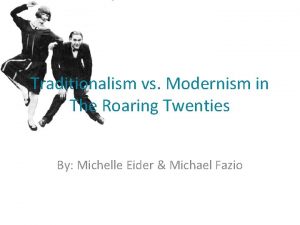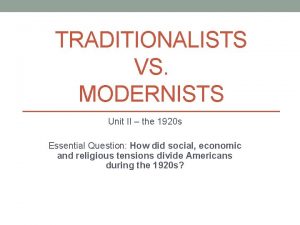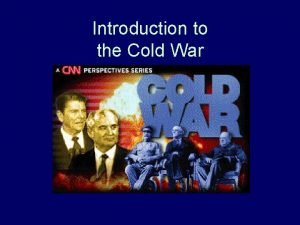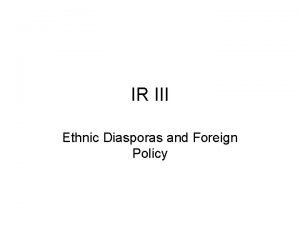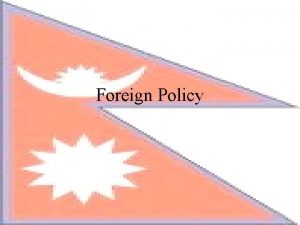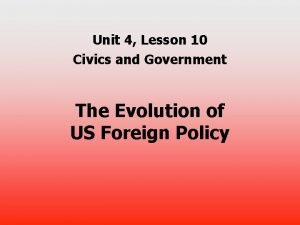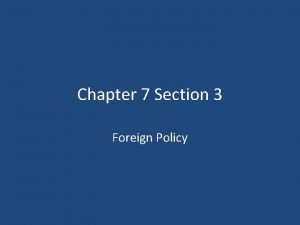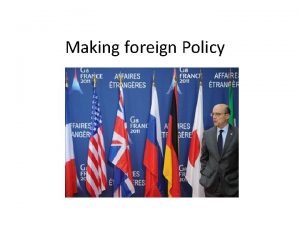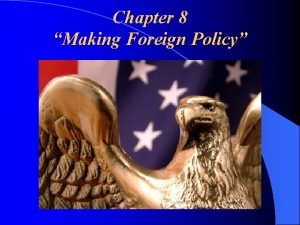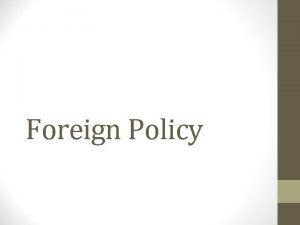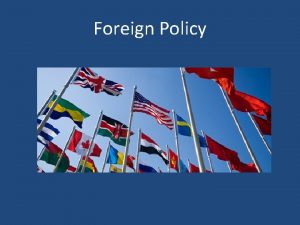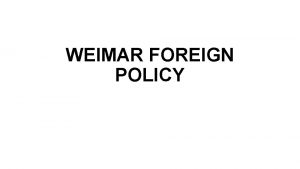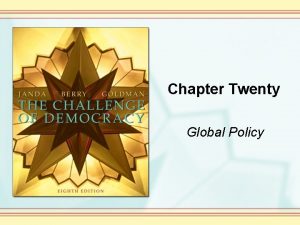Russian Foreign policy making The Traditionalists hard traditionalist











- Slides: 11

Russian Foreign policy making

The Traditionalists • “hard traditionalist school”: after the collapse of the USSR, the range of the Soviet conservatists opposed the Gorbachev’s reforms; • Wanted the re-birth of the quasi-Soviet Union; • Use geopolitical theories: antagonism of the West and Russia (Eurasians); intention to destroy Russian identity; especially NATO and the USA; • Russia has to maintain massive nuclear weaponry to resist all threats;

The Traditionalists • Russia’s allies are North Korea, Cuba, Iran, China, Muslim world - partners; • Russia has to maintain strong army; • Who are those group? : hard statists, bureaucracy afraid of liberal reforms, military elites.

The Pragmatists • Born in 1990 s: “realistic and pragmatic”; • Take seriously globalization; • Russia has 2 options: associate with the community of democracies, or will be removed to the global periphery; • Main aims: strong high- tech, social innovations, human capital; • Main origin of security threats: domestic threats, instability in provinces of Russia, growing terrorism, etc.

The Pragmatists • No possibility of a “war” against NATO or West; • Russia needs a small well-trained to fight effectively local wars; • China’s future: threat for Russia's Far Eastern provinces?

Multi-polar Concept • • New elites thoughts of Russia’s greatness; Not able to adopt the new Western views; E. Primakov; New independent states are Russia’s zones of influence and responsibility. • “New Imperialists”

Neo- Eurasians • Eurasian concept founders: Trubetskoy and Savitsky; • 1960 -70 s: L. N. Gumilev: the idea of “passionarity”: synthesis of history, geography (landscape), biosphere and ethnicity; • Followers continued the ideas towards symbolic concepts of “Steppe and Forest”;

Neo- Eurasians • Neo-Eurasian concept has several directions: 1. Opposes the liberal Western views, and Russia is considered as a large space with the mission of the creation of the empire; 2. Russia is considered as a large space with the mission to create the empire of “Eurasian socialism” (A. Dugin)

Neo- Eurasians 3. Idea of the continental union of Russia and Iran (anti- Atlantism) with Islam and Orthodox Christianity, Turks and Russians are the basis for the union; this theory does not agree with Atlantic, mondialistic, or Europeanist approaches; many 7 common points with Islamic socialism, European national-Socialism.

Neo- Eurasians 4. Economic Eurasians (N. Nazarbayev) 0 revival of the economic cooperation of the post-Soviet space; + Russia as a guarantee for the neighbors (G. Zyuganov) + Russia as a Great Power towards the south of the continent (Afghanistan, Pakistan, India) to protect them from “anaconda” plan (V. Zhirinovsky)

Neo- Eurasians • Common conclusions: 1. Eurasia is an alternative to the West source of the civilizations processes (whereas the West values forced in the east create planetary conflicts); 2. Synthesis of the Forest and Steppe created and authentic culture. (A. Dugin: “Miseries of Eurasia” (1996));
 Traditionalism vs modernism
Traditionalism vs modernism Traditionalists vs modernists
Traditionalists vs modernists I want to live
I want to live Too foreign for home too foreign for here
Too foreign for home too foreign for here Imperialistic synonym
Imperialistic synonym Origin of cold war
Origin of cold war Actors in foreign policy
Actors in foreign policy What is foreign policy analysis
What is foreign policy analysis Andrew johnson foreign policy
Andrew johnson foreign policy Unit 4 lesson 10 american foreign policy
Unit 4 lesson 10 american foreign policy Foreign policy vocabulary
Foreign policy vocabulary What was thomas jefferson foreign policy
What was thomas jefferson foreign policy
